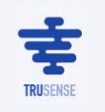BiosensUM 2019
BiosensUM 2019
BiosensUM is a team competing in Sensus 2019, its universities are Université de Montréala–HEC Montréalb and Polytechnique Montréal. For Sensus 2019, BiosensUM investigated the possibilities for creating a biosensor which is able to measure the concentration of Adalimumab. The full TRD can be found via this link
Method
Surface Plasmon Resonance
Molecular Recognition
In order to specifically detect adalimumab, we functionalized the gold-coated prism according to an established protocol optimized for antibody sensing in plasma with a self-assembly monolayer (SAM)5to which we attached TNF alpha, the highly specific ligand of adalimumab. The molecule used for the SAM is a short hexa-peptide with a thiol functional group at the N-terminal extremity (3-MPA-LHDLHD-OH) (1mg/mL in DMF) that will covalently bond to the gold layerand will form a dense peptide layer after 16h of incubation
Physical Transduction
The refractive index increase caused by the binding of adalimumab with TNF-alpha at the gold-layer surface causes a shift in the λ. A typical SPR instrument would be equipped with a spectrophotometer that can accurately measure wavelength shifts. However, such a detector is bulky, expensive and not user-friendly since it requires to be connected to a computer to process the data. We developed an SPR system using a cell phone LED light as the incident light source and the CCD camera as a detector by taking a simple picture. The CCD camera will not measure a wavelength shift;however, we can detect a corresponding pixel shift in the captured image with the custom algorithm integrated in our phone application.
Cartridge
We developed a microfluidic chip maximizing the area ofdetection while minimizing the volume of sample. Our cartridge is 2cm by 2cm by 1cmand made in polycarbonateand is sealed to the gold-coated prism. The sample is injected into the input channel and suction is then applied at the output channel using a small syringe to induce a controlled flow. This system allows multiple injections and washing steps required for the surface functionalization. Another important feature is the tight seal that forms between the microfluidic chip,the gold-coated prismand the syringe, which reduces the risk of leaks and contamination.
